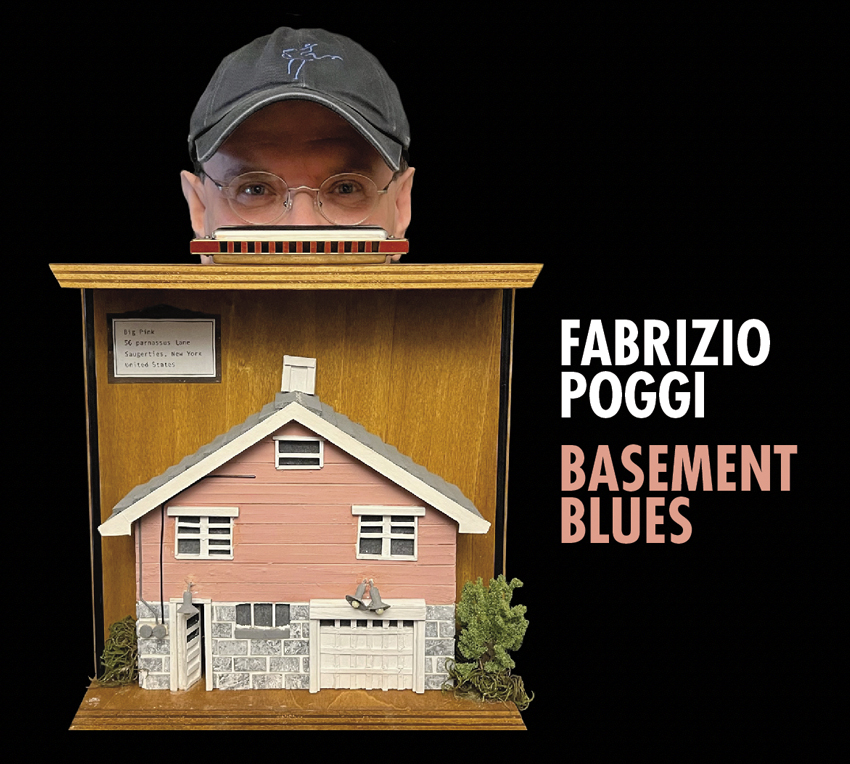An Interview with album producer, Ian Brennan
Mississippi State Penitentiary is a men’s maximum-security prison in the Mississippi Delta region. It’s the state’s oldest prison and its history is notorious for violence and a range of appalling abuses. In 1996, historian David Oshinsky said that the prison was “synonymous with punishment and brutality…the closest thing to slavery that survived the Civil War.”
In the past, the prison was often associated with blues music, with artist like Bukka White, Son House and R.L. Burnside all serving time there. John and Alan Lomax visited Parchman in 1933 during their cross-country field-recording trip and Alan said he found the music in the prison to be “the finest thing I’d ever hear coming out of my country…these people were poetic and musical and they had something terribly important to say.”
Move on ninety years and another recording finds Parchman inmates still making music that has the power to move us deeply and attests to the humanity of people often written off and considered hopeless.
Ian Brennan is a Grammy-winning record producer, film maker and author, who has worked with top artists like Lucinda Williams, Bill Frisell, Richard Thompson and many others. He has, however, also worked with artists in developing world countries like Rwanda, South Sudan and Botswana, and made a modern-day Blues field recording on the streets of West Oakland which resulted in the 2019 album by the Oakland Homeless Heart, Not a Homeless Person, Just a Person Without a Home. He also produced an album with prisoners of Malawi’s maximum-security facility, which was nominated for a Grammy award in World Music in 2016.
When I spoke to Ian recently, he spoke of his interest in recording little-known music and “supporting it in a way that it has a chance of being heard by more than one person or nobody.” So, he said, he goes “to remote places like Rwanda or Azerbaijan and finds people that are underrepresented.” Tellingly, he also commented that “you can go right into the heart of the world’s largest economy, America, and find the same thing when it’s among the unhoused or among the disabled community, or among those that are incarcerated.”
So it should be no surprise to find that Ian Brennan has produced a new album of songs by inmates at Parchman prison. Parchman Prison Prayer is a quite remarkable recording of prisoners singing gospel songs at their Sunday worship. From the first few bars of the unaccompanied Open the Eyes of My Heart Lord, I found myself completely emotionally engaged. The songs are raw and clearly deeply heart-felt, but there are some quite wonderful vocal performances here as well.
Ian told me, “I’m focused on voices and intimacy, and this is, I think, one of the more intimate records that I’ve ever participated in. And I think that that’s a large part of what strikes people about it. I mean, the backstory and the history are there, and they’re relevant, but I think people gravitate towards the record, even without that knowledge in many cases, because of the directness of the voices, which is something we rarely hear anymore… It’s a testament to their talents and their voices, and their courage to be so vulnerable.”
Getting in to a maximum-security penitentiary to do a recording is not straightforward, as you can imagine, so I was interested to find out how that worked for Parchman Prison Prayer. Ian had started the process, asking for permissions and so on, in late 2019. But that proved to be a rather difficult time, both from the pandemic point of view and the lawsuits lodged in 2020 against the prison by Jay-Z and Yo Gotti. Living conditions were squalid, with vermin common, prisoners suffering brutal temperatures and poor food, and inmate violence and suicide rates unacceptably high.
Thankfully there were enough changes made in conditions that the lawsuits could be dropped in January of this year. Brennan commented on how shocking he found reports of the conditions in Parchman prior to this – “conditions worse in some ways than Zomba prison in Malawi, which was the maximum prison for the world’s poorest nation at the time. To see that happening in America, where there’s such an abundance of resources, potentially makes it all the more shocking.”
With conditions improved and a new administration installed, Brennan was able to make arrangements for his recording this year.
Said Ian, “They were willing to try this, obviously with some reservations, because they have every legitimate reason to fear that maybe somebody has an agenda or is not sincere about wanting to record music, but maybe is looking just to get inside the prison for some other reason. But I was allowed in with very little notice.”
After two flights and a long drive, and a small window in which to do the recording, Brennan arrived at the prison. “I didn’t know what would be there or what I would find, but I had faith that it would be a worthwhile endeavour. There was no plan for a record; there was no record label; there was just the hopes to make some music with the men who were there and who were interested in doing so. And so I arrived, and within five or ten minutes we were recording and we recorded longer than I thought they would probably allow – about three hours or so.”
The album is fifteen songs long and makes for utterly compelling listening. You can hear the yearning, the heart-ache, the sorrow behind these performances – but you can also hear the joy and, remarkably, the sense of freedom.
Said Ian, “As we recorded, it was clear from the first song that something special was going on. One after another a singer would come up and take a turn, and by the sixth or seventh singer, it was clear that not only were there some really strong singers, but there was some downright virtuosity.
“And then it became clear that, yeah, there’s got to be a record of some form. I didn’t know what that would be. I kind of figured it would probably just be me putting it up online and doing what I could to try to support it. But fortunately, Glitterbeat took an interest in it without me even trying to get them interested. And really, it couldn’t have been better because the amount of attention it’s received is very remarkable for any kind of independent release nowadays, where the media is usually so controlled by celebrity culture.”
The songs are all gospel songs, some older sacred songs, some modern worship songs and one original to an inmate. Said Ian,
“The anticipation was that it would be a gospel record. It was a Sunday morning church service, especially convened, meaning that it was people from four different areas of the prison. They have different services on a Sunday for different denominations and also the different sections. But I didn’t know what they were going to sing.
“There’s an idea of a big connection there to the blues, but in fact, largely that connection is historical. It’s an association that people have who are aware of that history. But for the men there, and for a lot of the people in the area, it’s not an everyday reality. It’s not what they listen to. They could probably talk to you about other forms of music, like, say, hip hop. But gospel is a through line for most of them – some of them have found faith through the process of being incarcerated, but for many of them, it’s just the through line culturally in their lives, and they’re singing songs that they heard as children, they’re singing songs that in many cases were sung a hundred years ago or more in the same communities.
“But what they’ve done with these songs is they have reworked them in such a way that they sound almost unrecognizable from their source. It’s hard to really compare the versions of the originals and also the versions that they’ve done.
“And another positive aspect of it was the element of people, everyone there from four different areas of the prison, different ages and different races, and some from the cities and the majority from the rural areas, all participating in the process together.”
I asked Ian what surprised him about the experience?
“It was a leap of faith being rewarded, in that I had almost no expectations or low expectations – if there hadn’t been a single song recorded that seemed strong for future releasing, that would’ve been fine with me, honestly. But to find so many compelling singers and so much emotion, it was moving. It was an extremely moving experience, it was unforgettable really, even though it was brief. It was extremely intense, every aspect of it.”
I’m aware that some people might be cynical about people finding or expressing faith while they’re in prison. I wondered what Ian might say about that, based on his experience?
“Well, I would say that a prison forces people to confront their failures daily, if not hourly. And it is hard to not be changed by the experience. Whether somebody has changed, for better or for worse, is really the question.
“And I think as a society, what we have to ask ourselves is what is our objective? Is it constructive or destructive? Because the majority of the individuals that are in prison will return to the community. They remain part of the community. They are loved in most cases by many people, by children, mothers and fathers, and wives and husbands and so on. So for most people, they certainly are not really allowed to be in denial. Prison doesn’t really afford that.
“And there’s a very real aspect here that is just on a human level. The spiritual or biblical aspects aside, when someone is in prison and they go to a prison service on Sunday, they’re treated like an individual, and often times it is the only time all week that they feel that, maybe for an hour or two. And so that alone is extremely powerful in an environment where you’re often just called by your inmate number, and not your name.”
I asked Ian what he hoped would be the effect of on people who hear the album.
“Well, I think the hope is that hearing the music will humanize the listener but also humanize the person that’s singing – so that they can be understood in all their complexity and not in a binary way, not as a good or a bad person, but as a complex individual who has the potential for redemption. And I think if you listen to these voices without knowing the histories of the individuals that participated, it’s clear that they’re not the same people they were before. And that’s clear in the voices themselves.”
Redemption. That’s a powerful word. Maximum security prisons are for those convicted of the most serious crimes, but songs like Break Every Chain – “There is power in the name of Jesus to break every chain” – and Locked Down, Mama Pray for Me – “help me not to do the same thing over again…I once was lost, now with God I’ve reached my destination” speak volumes about the possibility of redemption and change. Don’t miss the opportunity to listen to this compelling album. And thanks to Ian Brennan for giving us the opportunity to encounter in a small way a world most of us know little about.















































